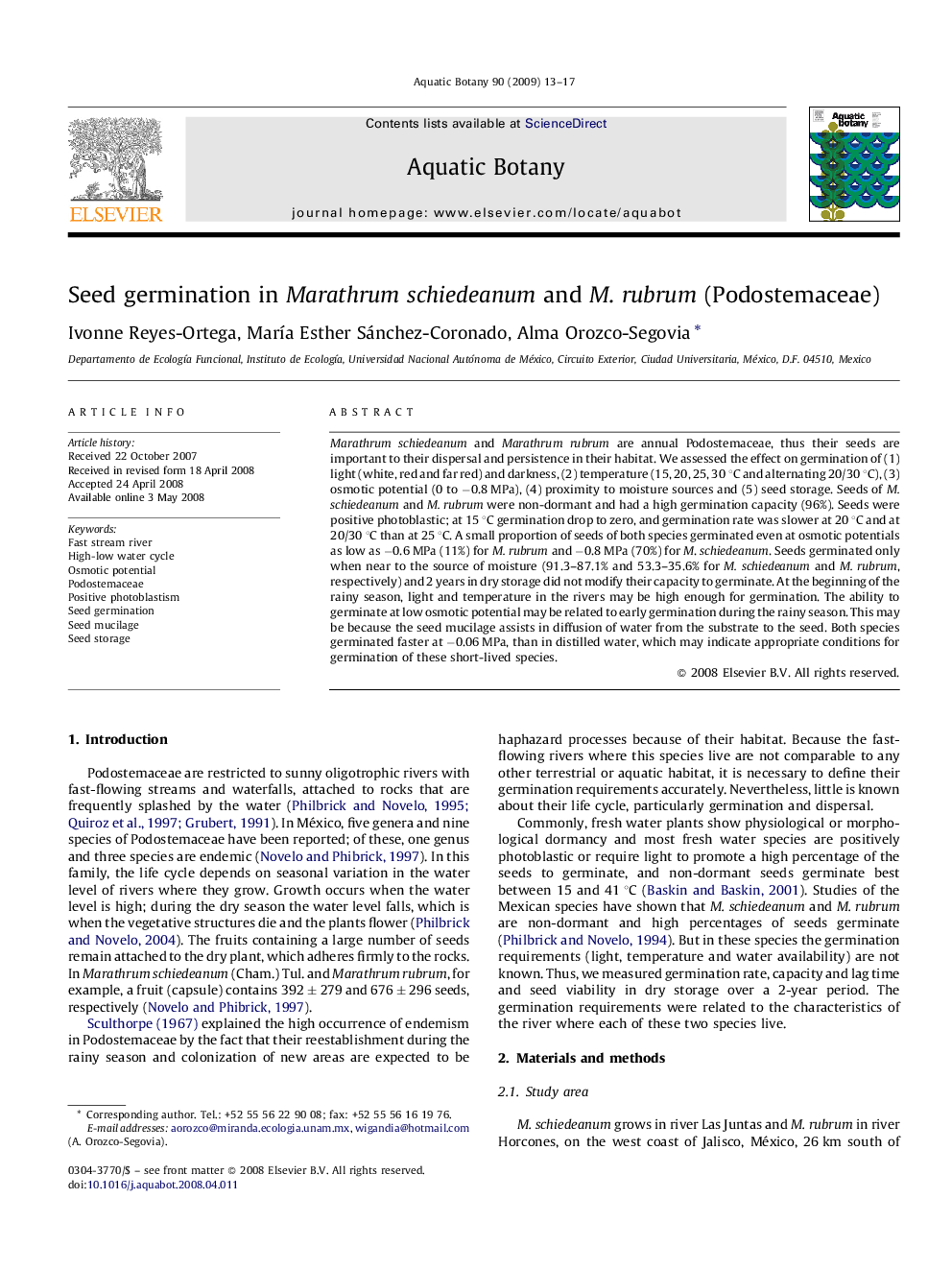| Article ID | Journal | Published Year | Pages | File Type |
|---|---|---|---|---|
| 4528397 | Aquatic Botany | 2009 | 5 Pages |
Marathrum schiedeanum and Marathrum rubrum are annual Podostemaceae, thus their seeds are important to their dispersal and persistence in their habitat. We assessed the effect on germination of (1) light (white, red and far red) and darkness, (2) temperature (15, 20, 25, 30 °C and alternating 20/30 °C), (3) osmotic potential (0 to −0.8 MPa), (4) proximity to moisture sources and (5) seed storage. Seeds of M. schiedeanum and M. rubrum were non-dormant and had a high germination capacity (96%). Seeds were positive photoblastic; at 15 °C germination drop to zero, and germination rate was slower at 20 °C and at 20/30 °C than at 25 °C. A small proportion of seeds of both species germinated even at osmotic potentials as low as −0.6 MPa (11%) for M. rubrum and −0.8 MPa (70%) for M. schiedeanum. Seeds germinated only when near to the source of moisture (91.3–87.1% and 53.3–35.6% for M. schiedeanum and M. rubrum, respectively) and 2 years in dry storage did not modify their capacity to germinate. At the beginning of the rainy season, light and temperature in the rivers may be high enough for germination. The ability to germinate at low osmotic potential may be related to early germination during the rainy season. This may be because the seed mucilage assists in diffusion of water from the substrate to the seed. Both species germinated faster at −0.06 MPa, than in distilled water, which may indicate appropriate conditions for germination of these short-lived species.
